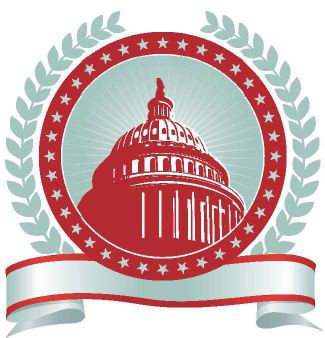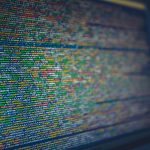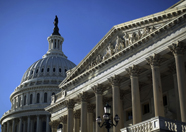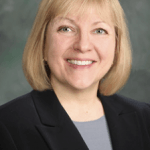Seventeen years after federal regulators restricted a promising wireless technology to protect GPS and other spectrum users, they are being asked to loosen those limitations. Ultra-Wide Band (UWB) proponents insist the strictures are too tight and cut off their ability to innovate. In June, Robert Bosch LLC formally requested the Federal Communications Commission (FCC) do what it said it would do back in April 2002: reexamine controls on UWB that the FCC itself called “extremely conservative” when they were written. The request is not to change the rules—not just yet anyway—but for the FCC to launch a rulemaking process that could eventually lead to changes in the rules. And Bosch wants a lot of changes.
Expand Ultra-Wide Band?
The company seeks to alter the definition of UWB, to allow more frequency-hopped emissions, stepped frequency and swept frequency (frequency modulated continuous wave or FMCW) emissions. It is unreasonable, Bosch said, to continue to preclude all frequency-hopped UWB emissions below 10 GHz as well as pulsed, stepped and swept emissions.
The firm also wants to change the kinds of applications the rules allow. For example, it said, there is potential for using UWB imaging and surveillance systems for ranging, tracking and object classification; there are also opportunities in the home and building automation sectors for motion and presence detection. Bosch noted the EU allows UWB for fixed outdoor applications and location tracking. Bosch also said the use of UWB imaging and surveillance should not be limited to law enforcement, fire/rescue organizations, public utilities, mining and construction companies.
“A more generalized definition for UWB surveillance system applications is in order,” the firm said. “Within these more generic definitions should be included more flexible use cases (independent of user categories, which do not by themselves avoid misuse). If the definitional regulations are not preclusive of new UWB applications, and if there are clear, yet flexible technical requirements (including the flexibility to utilize varied emissions types), this would provide better interference protection than defining who the eligible users of unlicensed devices are and excluding most use cases in the process.”
Surveillance and imaging applications are not the only ones being unduly restricted, Bosch suggested. The firm noted that UWB technology can’t be employed for generic material sensing or the operation of toys. UWB operation is not allowed inside vehicles, onboard aircraft, ships or satellites.
Some of the controls, Bosch insisted, don’t make any sense. For example, while it’s OK to use UWB to determine what is inside a wall, it is not OK to use UWB as a stud finder.
“The current UWB rules (principally but not exclusively the technical and definitional rules) are so stringent,” Bosch wrote, “that of necessity, virtually all new UWB products and systems must apply to the Commission for, and be subject to a waiver as an incident of being granted certification for marketing and sale of the device in the United States.”
In the Beginning
Those rules took shape during a fight started by the FCC itself in October 1998, when the agency launched an inquiry into whether UWB devices could be allowed to operate on an unlicensed basis under the Commission’s Part 15 rules. UWB uses very low power signals and precisely timed pulses—rather like the ping of a tuning fork—to transmit data, sense objects or do unusual tasks like “see” through walls. UWB capabilities are enabled, in part, by the fact that its signals range across hundreds, sometimes thousands, of megahertz of frequencies. But because the signal power is low, and the pings short-lived, the chance of interference is lower.
While the risk to many existing uses of radio frequencies may be limited, there was almost immediate concern about UWB’s potential to impact another low-powered signal: GPS.
The Federal Aviation Administration (FAA) was one of the first to respond to the FCC’s 1998 inquiry, saying that allowing UWB systems to operate in restricted bands would degrade the safety of the nation’s air traffic control system.
“In the case of the FAA, the restricted bands are allocated to services used for critical aeronautical safety services,” the agency wrote. “The FAA is opposed to any authorization of licensed or unlicensed UWB systems to intentionally radiate in these bands. It is likely that authorizing even limited operation of such systems will lead to further proliferation of UWB systems as new applications for their use are developed. Civil aviation’s requirement for protected radio spectrum, including that supporting critical communications, navigation, and surveillance safety services, is paramount.”
The GPS Industry Council expressed concern early on that operation of UWB systems in bands that overlap with the GPS frequency bands would cause interference with a wide range of safety-of-life applications. “Any increase in the basic noise floor will significantly reduce the ability of the receiver to acquire a GPS signal or even to maintain tracking of a GPS signal, or cause errors in position or time accuracy. Any of these consequences is intolerable to the GPS user segment.”
Over the course of the next four years—in a process that Bosch called “contentious”—the GPS community and a host of users of other bands argued with UWB advocates about opening the airwaves to the new technology. A total of 1,167 documents were filed in a docket that was finally closed in 2014.
In the case of GPS, the discussion evolved into hardware testing. The National Telecommunications and Information Administration (NTIA) tested a series of GPS receivers to determine how they would stand up if the satellite navigation bands were used for a range of different UWB applications.
“Once that damage is done, it cannot be undone.”
The GPS Innovation Alliance
NTIA is the coordinating agency for government uses of the spectrum— which includes the frequencies relied upon by the Air Force-run GPS constellation— and its input carries significant weight. The results informed restrictions on UWB frequencies that barred nearly all applications from using GPS bands, limited emissions and put in place other restrictions when the FCC issued its First Report and Order in 2002.
Getting to the testing process, however, was not all that smooth. The FCC said, at first, that it would allow time for testing and then asked for results in four months, which experts said was not enough time for full studies. Initially there was no money budgeted for the testing, some of which was also done by Stanford University, the University of Texas and the Applied Physics Laboratory working in cooperation with Johns Hopkins University. Thirty days into the 4-month test period a total of $600,000 was scraped together by the FAA and its parent agency, the Department of Transportation, only to have a member of Congress step in and freeze the transfer of the funds. Senator Richard Shelby (R-Alabama), then the head of the Senate Appropriations Subcommittee on Transportation, called the FAA Administrator and asked that the funds be held pending the development of fair and effective parameters for the tests. Time Domain, one of the key UWB players involved in the rulemaking, was a constituent of Shelby’s, who is still in Congress and now holds one of the most powerful jobs in Washington: chairman of the Senate Appropriations Committee. In 2018 Time Domain became part of Humatics, a microlocation technology company which maintains an office in Huntsville, Alabama, where Time Domain was based.
The military also weighed in on allowing UWB. Deputy Secretary of Defense Paul Wolfowitz wrote to the Secretary of Commerce saying, “UWB must be regulated in a way to protect military and civil use of GPS and other critical systems.” According to references in the filings, DOD took the position that it was necessary to limit UWB devices to operating at 4.2 GHz or above, except, perhaps, for imaging devices. Sprint PCS said in a filing that it was aware of similar concerns about harmful interference to various other services, suggesting that the FCC could provide adequate protection to all existing services by limiting UWB emissions to above 6 GHz.
Testing, Testing
The tests found that UWB signals could interfere with GPS. The FCC analyzed the results across more than 16 pages of its First Report and Order, which was posted in the docket May 17. In the end, the Commission concurred that extra care was needed to protect GPS users.
“Of particular concern is the impact of any potential interference to the GPS band at 1559–1610 MHz,” the FCC wrote. The Commission also expressed concern about “interference to any additional frequencies allocated to GPS, e.g., the planned L5 frequency in
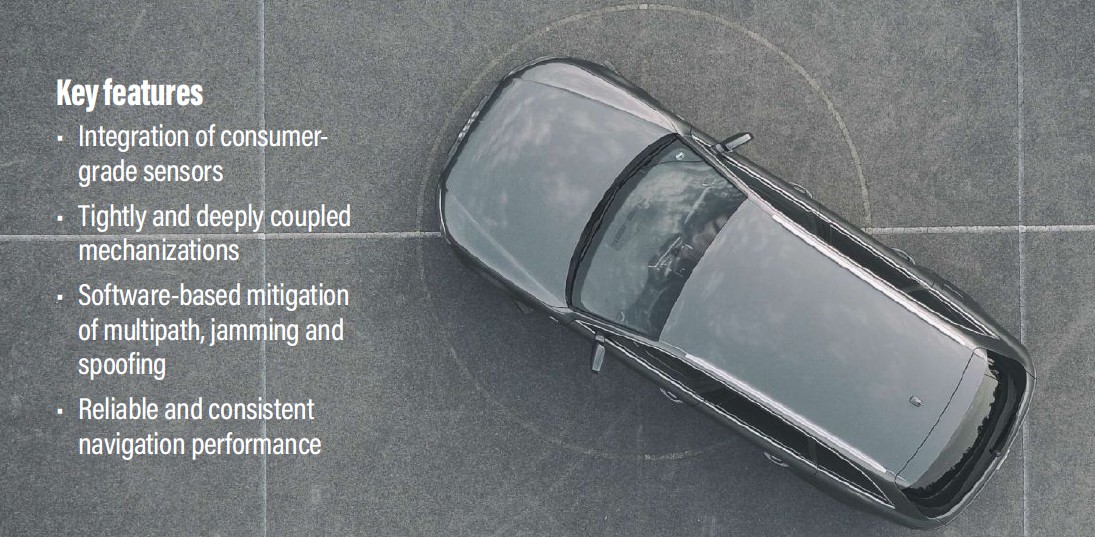
QuNav develops and implements sensor-fusion and software receiver solutions for GPS-challenged and GPS-denied environments.
INTRODUCING GIVE 1.0
GNSS/Inertial Vehicular Engine for Automotive Applications GIVE is a low-cost, completely self-contained solution that maintains accurate navigation capabilities even in THE most diff icult environments— urban canyons, tunnels and parking structures.
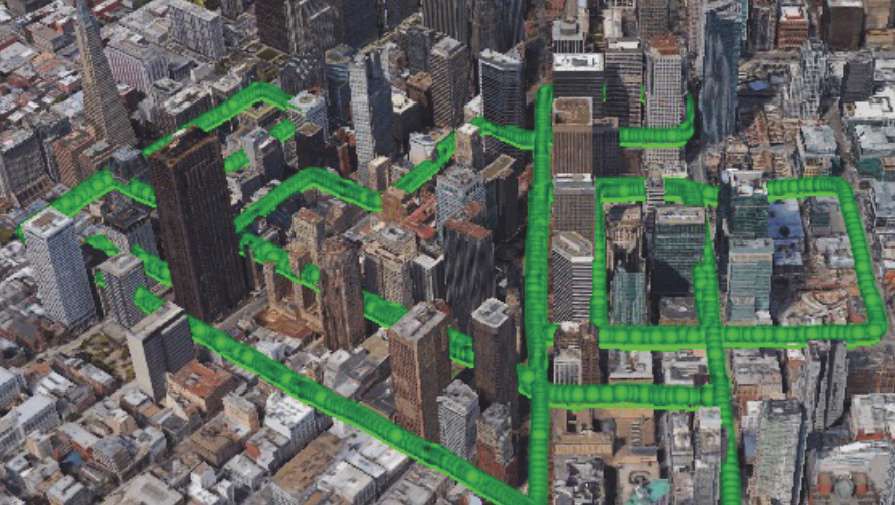
Download Example Test Results (www.qunav.com/products)
the 960-1215 MHz band. GPS will be increasingly relied upon for air navigation and safety, and is a cornerstone for improving the efficiency of the air traffic system. GPS also may be used by commercial mobile radio E-911 services to enable police and fire departments to quickly locate individuals in times of emergency. Moreover, businesses and consumers are now employing GPS for various applications, such as for navigation by automobiles, boats and other vehicles, surveying, hiking, and geologic measurements. Therefore, any harmful interference to GPS could have a serious detrimental impact on public safety, businesses and consumers. In addition, propagation losses are not as great below 2 GHz, and services in this region of the spectrum tend to employ omnidirectional antennas that do not discriminate against undesired signals. These factors tend to increase the risks of interference below 2 GHz.”
To address these risks but still allow some the use of UWB, the FCC devised a complex set of application-byapplication, band-by-band restrictions including limits on the Equivalent Isotropically Radiated Power (EIRP) of out-of-band emissions (OOBE). For example, through-the-wall imaging systems—which, as the name implies, enable users to determine the location or movement of people or objects on the other side of a wall or similar structure—were only allowed to operate below 960 MHz or in the frequency band 1.99-10.6 GHz. The OOBE into in the 960-1610 MHz band from these devices had to be kept at or below –53.3 decibel-milliwatts (dBm) and –51.3 dBm or less in the 1610–1990 band. Their use was limited to law enforcement, fire and rescue organizations.
Systems that image what’s inside walls or structures like the side of a bridge or the wall of a mine must operate below 960 MHz or in the frequency band 3.1–10.6 GHz. Their operation is restricted to law enforcement, fire and rescue organizations and to scientific research institutions, commercial mining companies and construction firms.
High-frequency systems operating with a –10 dB bandwidth between 3.1 GHz and 10.6 GHz—which includes some ground penetrating radars (GPRs), communications and measuring systems as well as wall and medical imaging devices—need to keep the EIRP of their OOBE to –65.3 dBm or less in the 960-1610 band and at –53.3 dBm or less in the 1610–1990 band. This class of UWB imaging systems also requires government coordination.
“Of the large number of potential UWB devices and applications, NTIA and others have tested only a small number, and those test results cannot be extrapolated to include, for example, the total power of a UWB communications network, or the aggregate, cumulative effect of UWB devices.”
Air Transport Association and affiliated organizations including the U.S. GPS Industry Council
What’s Next?
The importance of doing more tests as an element of expanding future UWB usage was highlighted during the original debate by a coalition of more than three dozen firms and organizations including the Air Transport Association, several airlines, GPS receiver manufacturers, surveyors, telecommunications firms, and the U.S. GPS Industry Council.
“The broad range of prospective UWB devices includes many different types of signals in many potential bands and their measurement and analysis is very complex,” the coalition wrote, on March 27, 2001. “However, effective and reliable measurement of the emissions from these devices is critical to assess whether and how UWB pulse position modulation technologies can be successfully and safely introduced into the frequency domain without life threatening or other adverse effects on existing operations. Of the large number of potential UWB devices and applications, NTIA and others have tested only a small number, and those test results cannot be extrapolated to include, for example, the total power of a UWB communications network, or the aggregate, cumulative effect of UWB devices. So, despite the testing done to date, adequate measurement and analysis of the effect of the full range of potential UWB devices on other spectrum users has not yet been done.”
Protecting incumbent spectrum users isn’t just about testing the different UWB applications, but also about assessing how many UWB devices there will be and where they will be, wrote Per Enge, then an associate professor at Stanford and part of its GPS Lab.
“While one, or even a small number of such UWB interference sources may cause only a small degradation in the noise level of wireless communications receivers, as well as GPS receivers…” Enge wrote in comments in September 1999, “large numbers of such UWB interference sources distributed over an area can raise significantly the overall noise level of all receivers in the area. Such a noise level increase will significantly reduce the sensitivity of the receivers and with it wireless communications system range and GPS performance.”
Moreover, he said, the increase in the noise floor caused by a UWB device at some distance from a GPS receiver may be small but grows as the separation decreases.
“With proliferation of UWB sources throughout an area, the likelihood of at least one UWB interference source being close enough to any particular wireless communications or GPS receiver to cause a significant increase in its noise level increases significantly.”
The GPS Innovation Alliance (GPSIA) argued this August against opening a new rulemaking as Bosch requested, saying that there has been no change in the technical analysis underpinning the existing UWB rules since they were created in 2002. Indeed, the suggestion that UWB devices have been able to operate without creating interference or raising the noise floor is not an argument against the need for strict rules, as Bosch suggested, but proof that the existing limitations are working, GPSIA wrote.
Moreover, some of the more “generic” rules being sought by Bosch would open the door to much higher OOBE levels, GPSIA said. The EIRP in the 1559–1601 MHz band would jump by up to “a staggering 29 dB” for vehicular radar, an application the FCC expected in 2002 to become “as essential to passenger safety as airbags.” That jump is “certainly not ‘negligible,’ ” GPSIA wrote.
Given the potential for dramatic increases in OOBE in critical safety-oflife bands, GPSIA said, and the lack of any technical analysis in the petition supporting the assertion that added UWB operations would not create harmful interference, new rules that facilitate the en masse introduction of more “generic” UWB devices “do not merit further consideration.”
GPS is a critical service to both civil and military users, GPSIA said in its filing, and has generated an estimated $1.4 trillion in economic benefits since it was made available for civilian and commercial use in the 1980s.
“Most benefits have accrued in the last 10 years and are spread among many major commercial sectors in the United States that have adopted GPS including 14 of 16 industries deemed infrastructure,” GPSIA wrote. Interference issues are, “if anything, even more important today given the natural proliferation of GPS and GPSenabled devices embedded in practically all walks of American life.”
“The potential of UWB devices to interfere with GPS was (and continues to be) well established. Based on the robust record, the Commission prudently chose a conservative approach to ensure interference from UWB devices will not degrade the performance of GPS signals,” said GPSIA.
There is nothing new in the technology or the petition that argues for changing those rules, GPSIA said, and loosening the limitations, as proposed by Bosch, creates risks. “The absence of an increased noise floor or a rise in interference is hardly a reason to start a rulemaking to overhaul the rules” GPSIA wrote; “once that damage is done, it cannot be undone.”

